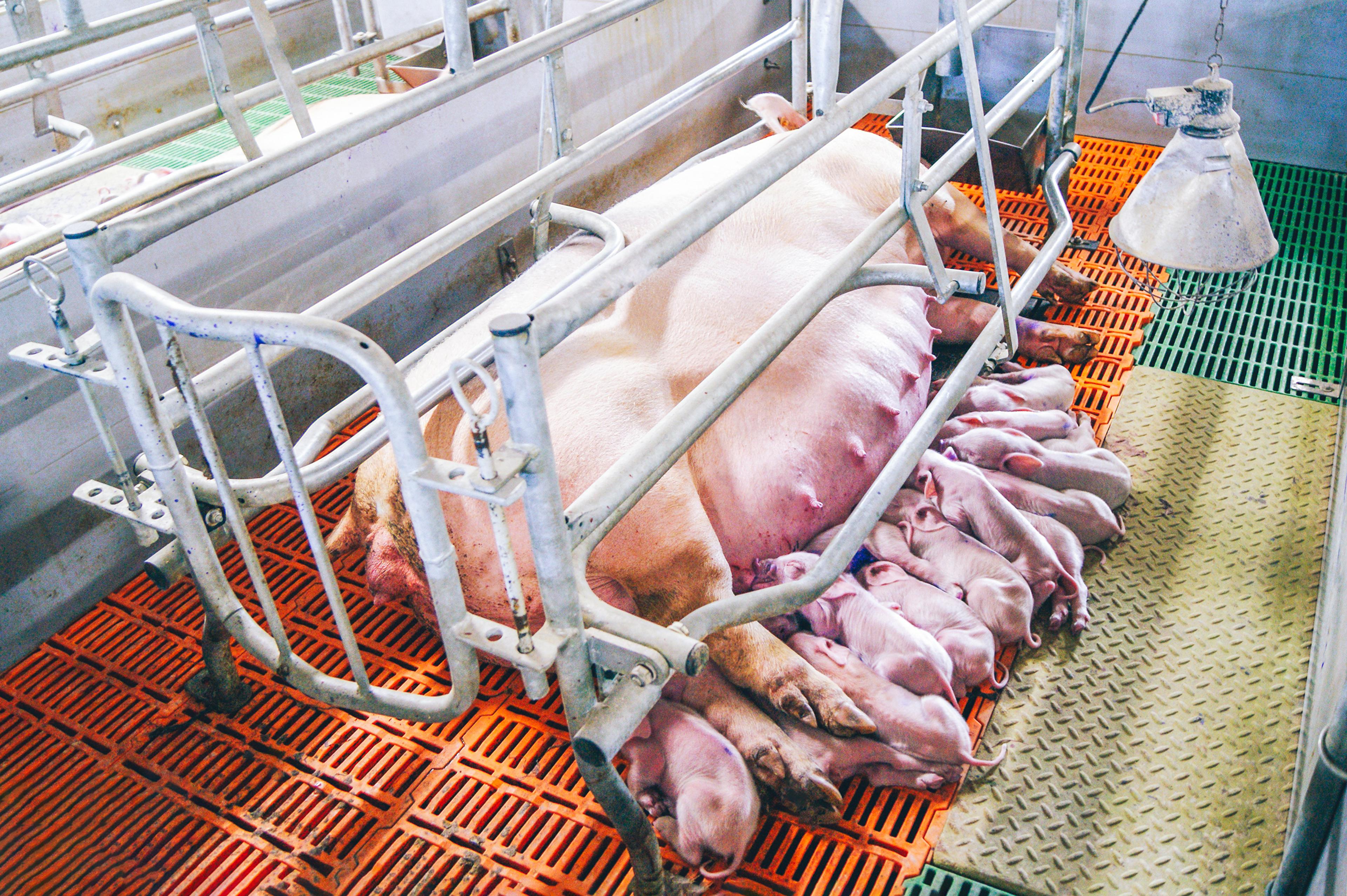What are farrowing crates – and why do they matter for pig welfare?
By press team, RSPCA Assured

Farrowing crates are still used on many pig farms in the UK and around the world.
These metal-barred cages are designed to confine mother pigs (called sows) before and after they give birth.
While they were introduced to protect piglets, I’ve seen first-hand how much these crates negatively affect sows’ welfare.
In this blog, I’ll explain what farrowing crates are, why they’re used, the problems they cause and how, if you eat meat, choosing higher welfare pork can make a difference.
Why farrowing crates are used
Sows are large animals, often weighing around 200kg, while newborn piglets weigh less than 2kg.
Because of this big size difference, there’s a risk of piglets being accidentally crushed when a sow lies down or changes position.
Farrowing crates are designed to reduce this risk by restricting the sow’s movement.
Some farms also use them because they
- take up less space than larger pens
- make it easier to manage sows and piglets
- are believed to lower piglet deaths (although research shows this isn’t always the case)
But while crates may offer some convenience, they come at a serious cost to animal welfare.
The problem with farrowing crates
Pigs are highly intelligent, social animals. In the wild, a sow’s natural instinct is to build a nest before giving birth. Inside a farrowing crate, she has no space to do this.
In fact, she can’t even turn around. She can only take a few steps forward and back.
This lack of freedom leaves sows:
- Stressed and frustrated
- Unable to explore or interact naturally with their piglets
- Prevented from expressing natural behaviour like rooting or nesting.
Each time she gives birth, a sow will probably spend five weeks confined in a crate.
With two litters a year, that’s nearly a quarter of her adult life spent in a cage where she can’t even turn around.
Farrowing crates are legal in the UK
Around 60% of UK sows are confined in farrowing crates when giving birth and nursing their piglets.
But not on RSPCA Assured-certified farms. The RSPCA’s welfare standards don’t allow farrowing crates.
The standards also ensure that sows always
- have enough space to turn around
- be provided with straw or other bedding for comfort
- be able to nest, rest and care for their piglets freely.
This approach protects piglets while also ensuring the sow’s welfare.
Better alternatives to farrowing crates
There are kinder ways to protect both sows and piglets.
That’s why sows are never confined in farrowing crates on RSPCA Assured-certified farms.
Instead, they live in:
- Spacious indoor pens with straw or other nesting materials
- Outdoor paddocks with access to dry, bedded shelters.
This means sows have the freedom to move around, care for their piglets and build nests.
Farrowing crates vs sow stalls
Farrowing crates are often confused with sow stalls, which are also sometimes called ‘gestation crates’.
- Farrowing crates are used for up to five weeks while a sow gives birth and feeds her piglets
- Sow stalls confine sows during their entire pregnancy (almost four months) before they’re moved to a farrowing crate for another month.
Sow stalls were banned in the UK in 1999 because of welfare concerns, but they’re still used in many other countries.
Farrowing crates, however, remain legal here.
Choosing higher welfare pork
Farrowing crates highlight the gap between standard and higher welfare farming.
If you eat pork, bacon, ham or sausages, look for the RSPCA Assured label when you’re shopping.
Then you know the pigs were never kept in farrowing crates and were raised to higher welfare standards.
Every purchase supports farmers who put animal welfare first.
And together, our choices can push the food industry – and policymakers – towards ending farrowing crates for good.
Frequently asked questions
Do farrowing crates reduce the number of piglet deaths?
Research shows that while crates may reduce some accidental piglet deaths, the difference is not always significant compared to higher welfare systems that allow sows more freedom.
Are farrowing crates banned in the UK?
No. They’re still legal, with around 60% of UK sows confined when they give birth and are feeding their piglets.
What’s the alternative to farrowing crates?
Free-farrowing pens and outdoor systems give sows space to move, nest and care for piglets, while still keeping piglets safe.
Monday, 22 Sept 2025